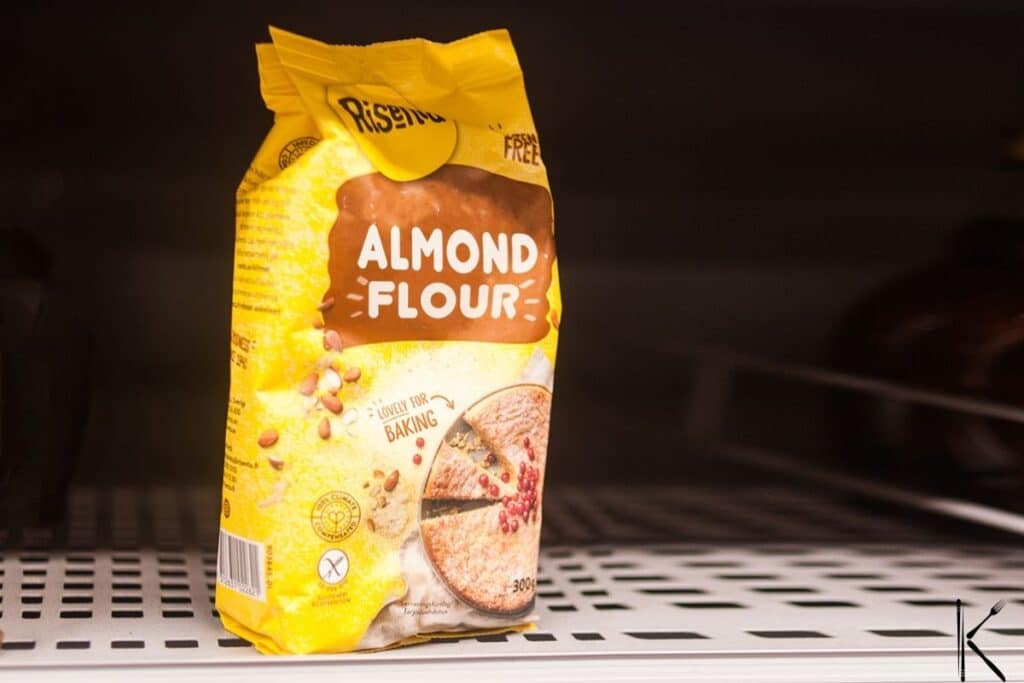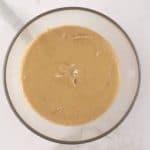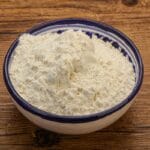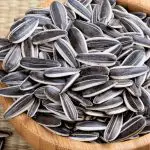In summary: If you need almond flour alternatives for allergies or preferences, consider substitutes like almond meal, pumpkin seed meal, hazelnut flour, peanut flour, pecan flour, sunflower seed flour, etc. Adjustments to quantities and other ingredients might be needed for best results.
Almond flour is well known for its use in those gorgeous French macaroons with their airy meringue-like cookie sandwich and creamy filling. It has however also become popular as a flour suitable for people with gluten allergies and a low-carb alternative to grain flours.
It may sound like a pretty specialized product that can’t be replaced, especially in something as delicate as a macaroon, but if you’ve run out or are baking for someone with a nut allergy, other options can work just as well, so don’t panic.
In this guide, we’ll help you choose the best almond flour substitutes depending on your dietary needs as well as what you are baking.
What Is Almond Flour?
As its name suggests, almond flour is made from raw almonds. Blanched almonds are peeled and then finely ground into a flour consistency. Due to its neutral flavor, it is suitable for baking sweet and savory dishes and adding to sauces and stews as a thickener.
Things To Consider When Choosing An Almond Flour Replacement
Almond and other nut flours have very different properties from regular wheat flour. In addition, gluten-free grain flours also have different characteristics. When replacing any type of flour in a recipe, you will need to consider the gluten content, how they absorb liquids, and the ratio of wet to dry ingredients.
A substitute for almond flour won’t necessarily be a cup-for-cup replacement. You may have to adjust the quantities, add xanthan gum or guar gum, and amend the proportion of other ingredients such as liquids, baking soda, and raising agents. The baking time might also need to be adjusted.
Gluten-free cakes are generally a lot denser than baked items using regular flour. For the closest match when replacing almond flour, use another nut-based flour.
Best Substitutes for Almond Flour
Here are the best gluten-free almond flour substitutes:
1. Almond Meal
An Almond meal is a good option if you would like the same nutty flavor in your dish, although the texture is not as smooth. The reason for the coarser texture is that the almonds are not peeled before grinding, resulting in less refined flour.
Since it is very similar, it pairs well with sweet and savory flavors, making it one of the most suitable alternatives. You can make your own almond meal if you have a pack of raw almonds at home by grinding them in a food processor or blender.
Best used in: Granola bars, bread, cookies, as breadcrumbs, coating meat, or adding to vegetable dishes and casseroles
Substitute quantity: Replace cup for cup in equal measures
2. Pumpkin Seed Meal
Pumpkin seed meal has a light nutty flavor, slightly less pronounced than almond flour. This makes it suitable for sweet and savory dishes. Being gluten-free, the ground pumpkin seeds offer similar properties in baking. As a bonus, it is also nut-free, low in carbs, and high in healthy essential amino acids.
The only word of caution with pumpkin seed meal is that it may turn baked goods a light shade of green due to its natural color.
Best used in: Any baked recipes, blended into smoothies, sprinkled over salads, yogurts, or other desserts
Substitute quantity: Replace cup for cup
3. Hazelnut Flour
Hazelnut flour works best in textured recipes that may be slightly crumbly and nutty since it doesn’t hold its form that well. It does have a deliciously rich and nutty taste that can be paired with sweet and savory dishes. The way you incorporate it as a substitute will depend on the items you are making. You can use cashew flour in the same way
Best used in: Baking recipes, cookies, and sweet pie crusts. It also makes a great fish or chicken coating
Substitute quantity:
- If you are baking a cake or something similar, substitute 1 cup almond flour with 1/2 cup hazelnut flour mixed with 1/2 cup wheat flour. Alternatively use 1/2 cup hazelnut meal mixed with 1/2 cup cassava flour for a gluten-free substitute.
- For cookies and pie crusts, you can substitute the hazelnut meal in equal quantities, since the end product has a denser consistency.
4. Peanut Flour
Peanut flour is only suitable to use if you are sure no one with allergies will be eating your baked goods. It is pretty similar in texture to almond flour, however, it has a strong peanut taste which will undoubtedly influence the flavor of your recipe.
The peanuts used to make this flour are fully or partly defatted. When you put regular peanuts in a blender and start blending, they will eventually turn into peanut butter and not flour due to the high percentage of natural oils and fats.
If you want to make your own peanut flour at home, be sure to toast them lightly and then let them cool completely before pulsing slowly in a food processor. If you overdo it, the warmth from the pulsing action may cause it to become pasty. Once you have a flour consistency, leave it for a few minutes to make sure it is completely cool and dry before storing it in an airtight container.
Peanut flour is high in protein and suitable for keto diets.
Best used in: Granola bars, muffins, and cookies
Substitute quantity: Replace cup for cup
5. Pecan Flour
If you think about the delightful taste of pecan pie, it’s hard to think that adding these delicious nuts to any baked recipe won’t be tasty. Although not that easy to come by, it does make a good alternative with its rich nutty flavor.
The nuts have their skin on during production, so keep in mind that the flour may be darker in color.
Best used in: Muffins, baked goods, cookies, crumble with ginger, cardamom, and cinnamon, as well as smoothies
Substitute quantity: Replace measure for measure
6. Sunflower Seed Flour
This is a great nut-free and gluten-free alternative, although it is not as common as other substitutes. It has a subtle sweetness but can be used in savory recipes as well.
Best used in: Muffins, cakes, and cookies
Substitute quantity: Replace ¾ cup sunflower seed meal for 1 cup of almond flour
7. Cassava Flour
Cassava is another wonderful gluten-free and nut-free alternative. Its neutral flavor and starchy qualities make it a good binding and thickening agent.
Best used in: Stews and sauces as a thickener. It can also be used in baked goods; however, it may be best to find a recipe specifically requiring cassava flour to avoid differences in texture and density depending on what you are baking.
Substitute quantity: Replace ¾ cup cassava flour for one cup almond flour when baking. You can use equal measures when using it for thickening sauces and stews.
Best Grain Flour Alternatives
8. All-Purpose and Whole Wheat Flours
All-purpose flour and wholewheat flour are pretty similar, except that all-purpose flour is more refined.
The fibrous husk of the wheat grain is removed during the manufacturing process of all-purpose flour, thereby eliminating the fiber, resulting in a fine white powder. Whole Wheat keeps the fibrous husk during milling, resulting in little brown specs of fiber in the end product.
The upside to using refined or unrefined wheat flour as a replacement in your recipe is that it is very easy to find and has a neutral flavor and color that won’t alter the taste or look of your baked goods too drastically.
Whole Wheat will be slightly darker. It does contain gluten and lots of carbs, so if either of these is an issue for you, choose another substitute.
Since the taste is fairly plain and does not offer any of the nutty notes that almonds provide, you may want to add sliced almonds or just a drop or two of almond essence into your batter for sweet recipes. Almond essence is extremely potent, so when we say a drop or two, we really mean it.
Best used in: Stews and sauces as a thickener, as well as any baked goods. Not suitable for people on a gluten-free diet.
Substitute quantity: Due to its binding properties, you will need to adjust your recipe when using this substitute. Use ¾ of a cup of wheat flour to 1 cup of almond flour, and reduce the number of eggs by one or two. Check the consistency of your batter to determine any adjustments.
9. Gluten-Free Flour
A gluten-free flour blend is specifically formulated for use in baking for people who have gluten or wheat allergies. The blends are carefully composed with various ratios of gluten-free starches to prevent baked goods that don’t rise or are very dense.
For example, if you only use rice flour, your end product will be a piece of rubber. However, incorporating a blend of rice flour with cornstarch, milk powder, potato starch, tapioca flour, and xanthan gum will provide the properties you need for adequate fluffiness.
Buy a premade gluten-free flour mix for ease of use and to ensure you have the right ratios. These very starchy products are better binders than almond flour, so you will need to use less in your recipe and check the consistency of your batter to determine any adjustments.
Best used in: Pancakes, waffles, brownies, muffins, and cookies
Substitute quantity: Use ¾ cup gluten-free flour to 1 cup of almond flour
10. Oat Flour
Oat flour has a slightly nutty taste and similar color to almonds, which makes it a great substitute. You can either purchase it as flour or make your own by grinding rolled oats in a food processor until it turns into the powder consistency you want.
If you require a gluten-free option, make sure the oat product you use is certified gluten-free oats, since many oat products contain gluten or are manufactured in a facility that processes gluten products as well.
Best used in: Cakes, waffles, muffins, bread, cookies, and as a thickener
Substitute quantity: Replace measure for measure
See more: oat bran substitutes
FAQs
Conclusion
There are so many alternatives to grab if you need something to replace almond flour in your recipe at the last minute. If you have whole nuts, seeds, or oats at home, you can even make your own flour.
The main thing to remember when using a replacement is to check the consistency of your batter and always try to go for flours with similar absorption properties as this will hugely affect the texture of your baked items. Happy baking!
See more:









